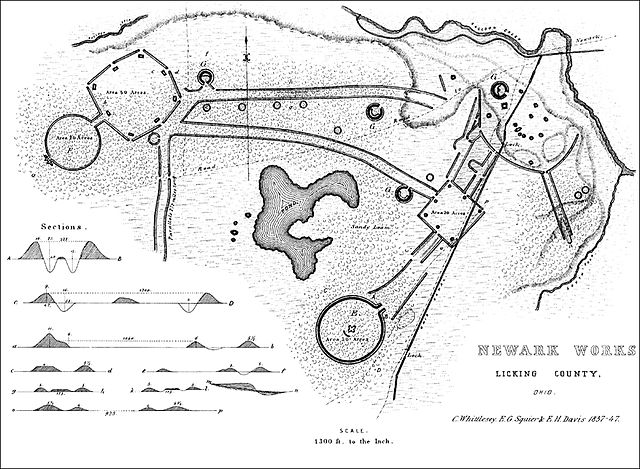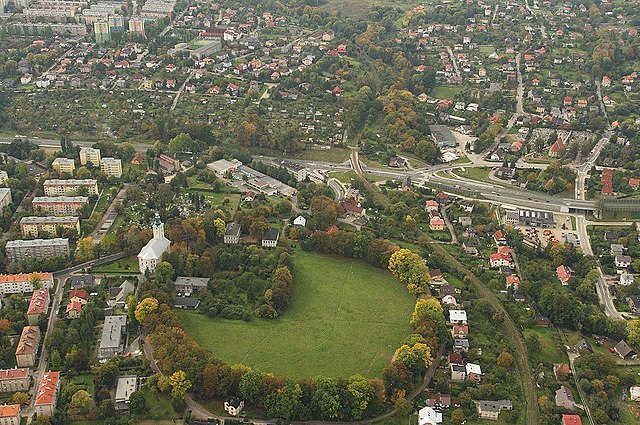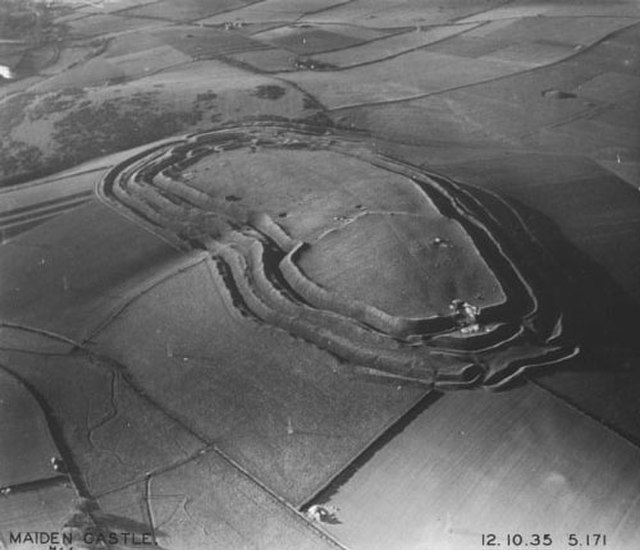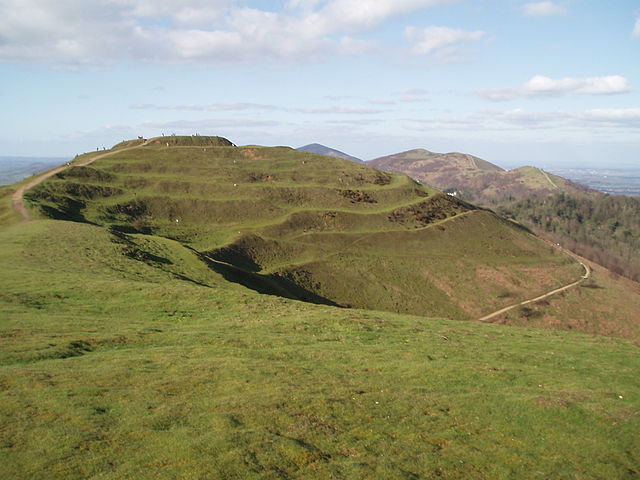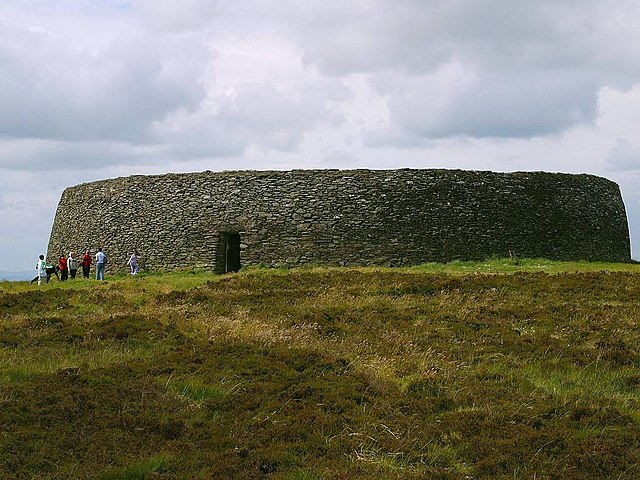In archaeology, earthworks are artificial changes in land level, typically made from piles of artificially placed or sculpted rocks and soil. Earthworks can themselves be archaeological features, or they can show features beneath the surface.
Offa's Dyke, Britain
A survey of a Hopewell enclosure; Newark Earthworks in Ohio, U.S.
Great Serpent Mound in Ohio
An 11th-century hill fort: Bielsko-Biała, Poland
A hillfort is a type of fortified refuge or defended settlement located to exploit a rise in elevation for defensive advantage. They are typical of the late European Bronze Age and Iron Age. Some were used in the post-Roman period. The fortification usually follows the contours of a hill and consists of one or more lines of earthworks or stone ramparts, with stockades or defensive walls, and external ditches. If enemies were approaching, the civilians would spot them from a distance.
Maiden Castle in England is one of the largest hillforts in Europe. Photograph taken in 1935 by Major George Allen (1891–1940).
The ramparts of the multivallate British Camp in Herefordshire
Exterior view of the Ringfort Grianan of Aileach situated in County Donegal
Hillfort at Coaña, Asturias, Spain


